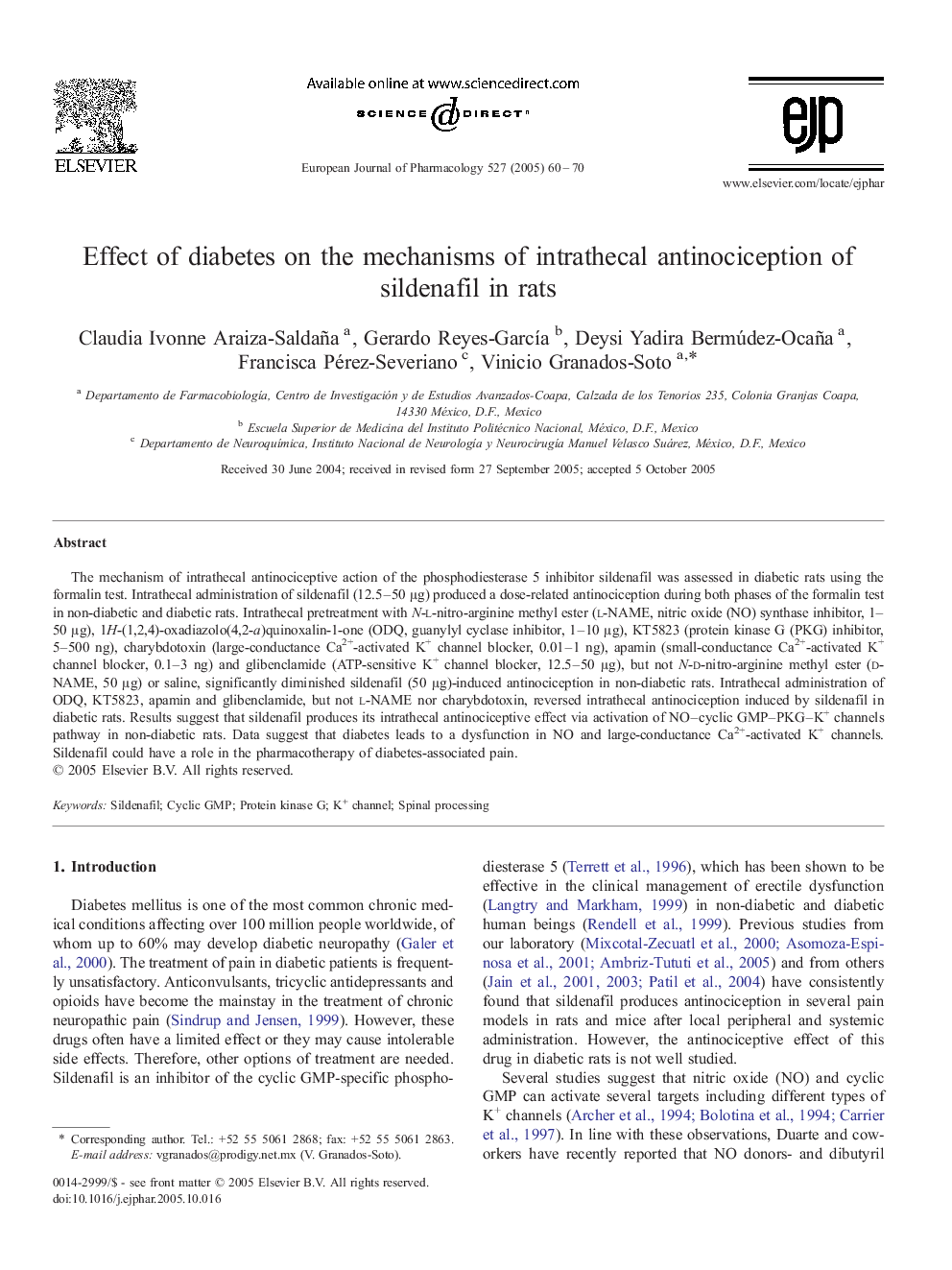| Article ID | Journal | Published Year | Pages | File Type |
|---|---|---|---|---|
| 9920934 | European Journal of Pharmacology | 2005 | 11 Pages |
Abstract
The mechanism of intrathecal antinociceptive action of the phosphodiesterase 5 inhibitor sildenafil was assessed in diabetic rats using the formalin test. Intrathecal administration of sildenafil (12.5-50 μg) produced a dose-related antinociception during both phases of the formalin test in non-diabetic and diabetic rats. Intrathecal pretreatment with N-l-nitro-arginine methyl ester (l-NAME, nitric oxide (NO) synthase inhibitor, 1-50 μg), 1H-(1,2,4)-oxadiazolo(4,2-a)quinoxalin-1-one (ODQ, guanylyl cyclase inhibitor, 1-10 μg), KT5823 (protein kinase G (PKG) inhibitor, 5-500 ng), charybdotoxin (large-conductance Ca2+-activated K+ channel blocker, 0.01-1 ng), apamin (small-conductance Ca2+-activated K+ channel blocker, 0.1-3 ng) and glibenclamide (ATP-sensitive K+ channel blocker, 12.5-50 μg), but not N-d-nitro-arginine methyl ester (d-NAME, 50 μg) or saline, significantly diminished sildenafil (50 μg)-induced antinociception in non-diabetic rats. Intrathecal administration of ODQ, KT5823, apamin and glibenclamide, but not l-NAME nor charybdotoxin, reversed intrathecal antinociception induced by sildenafil in diabetic rats. Results suggest that sildenafil produces its intrathecal antinociceptive effect via activation of NO-cyclic GMP-PKG-K+ channels pathway in non-diabetic rats. Data suggest that diabetes leads to a dysfunction in NO and large-conductance Ca2+-activated K+ channels. Sildenafil could have a role in the pharmacotherapy of diabetes-associated pain.
Related Topics
Life Sciences
Neuroscience
Cellular and Molecular Neuroscience
Authors
Claudia Ivonne Araiza-Saldaña, Gerardo Reyes-GarcÃa, Deysi Yadira Bermúdez-Ocaña, Francisca Pérez-Severiano, Vinicio Granados-Soto,
